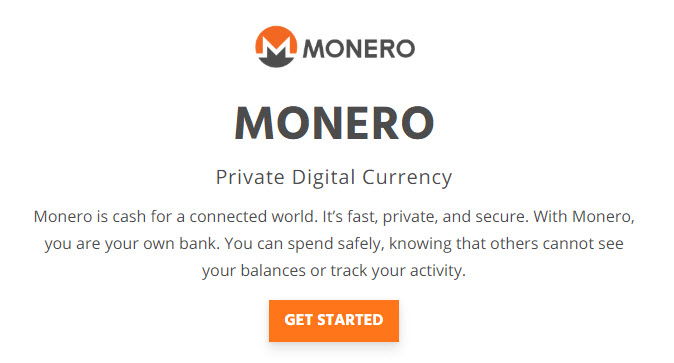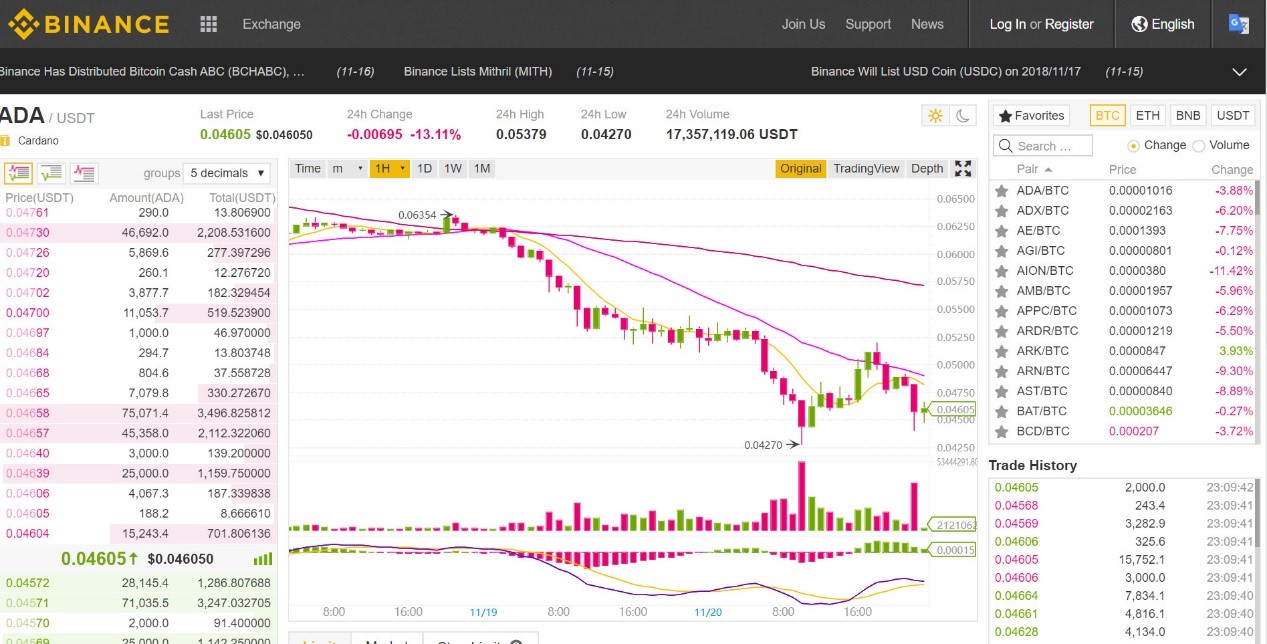Monero (XMR) Review: A Coin Offering Complete Privacy and Anonymity
| Monero Key Information | |
| Name | Monero |
| Ticker | XMR |
| Total Supply | 18,400,000 |
| Initial Price | $1.41 |
| Category | Digital Currency |
| Website URL | Go to GetMonero.org |
| Resources | Read User Guides |
Monero is a cryptocurrency that was developed as a response to the lack of complete privacy, security, and anonymity of classic cryptocurrencies such as Bitcoin and Ethereum. Its dedication to privacy, both of a sender’s address and the amount of their transactions, has contributed to its wide adoption and price increase over time. A bootstrapped coin, it has no company or one individual behind its development and has an active community which includes its anonymous developers and founders.
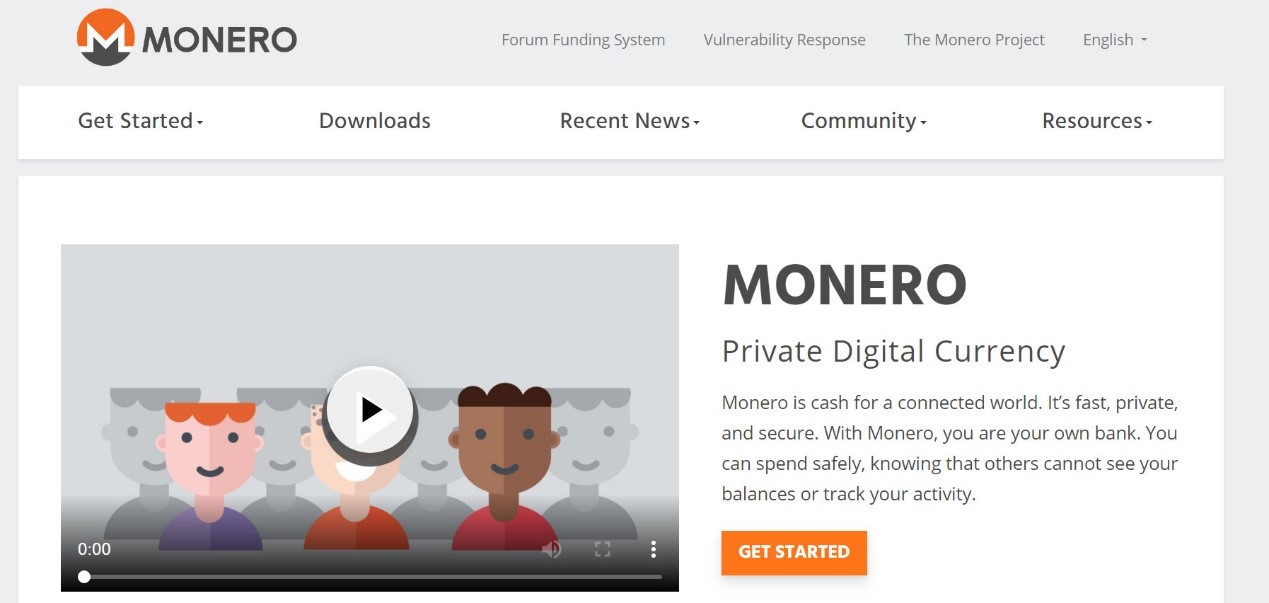
The Idea and the Team Behind Monero
Launched in 2014, Monero was developed with a special emphasis on privacy. The coin was coded by several anonymous individuals and first known as a currency by the name of Bitmonero. Monero is a 2014 fork of the original Bitmonero coin.
Most cryptocurrencies, such as Bitcoin and Ethereum, have transparent transactions that are open to the public and can be traced to a person’s identity. There have been cases where law enforcement has been able to identify individuals through their bitcoin wallet address.
Monero, on the other hand, ensures complete confidentiality and the inability to trace these transactions. It does this through the use of ring technology and stealth addresses. Its privacy and anonymity allow each coin to be substituted for another coin, which means that it is fungible. Its fungibility, combined with its focus on anonymity and privacy, have increased the coin’s value and adoption since its launch in 2014.
The Department of Homeland Securities has recently announced its intention to track Monero transactions with its own monitoring framework using forensic analysis. This announcement comes after significant success in tracking bitcoin transactions as well as Monero’s rise as the best performing cryptocurrency in 2016.
Monero Price History
Monero is a successful example of a bootstrapped coin, having raised money from its own community. It did not have a pre-launch sale, VC funding, or big-name investors helping to market it. None of its founders have allocated any of the coins to themselves.
On the contrary – most of its developers and its main creators are completely anonymous. The coin’s volatility, ranging from anywhere from $0.25 (in January 2015) to $60.00 (in May 2017) has made it particularly appealing to short-term investors. Monero started trading in 2014 at a price of $1.41 . By the beginning of 2017 it traded at $12.00. It peaked in January 2018 at $437.54 and has since been on a downward trend.
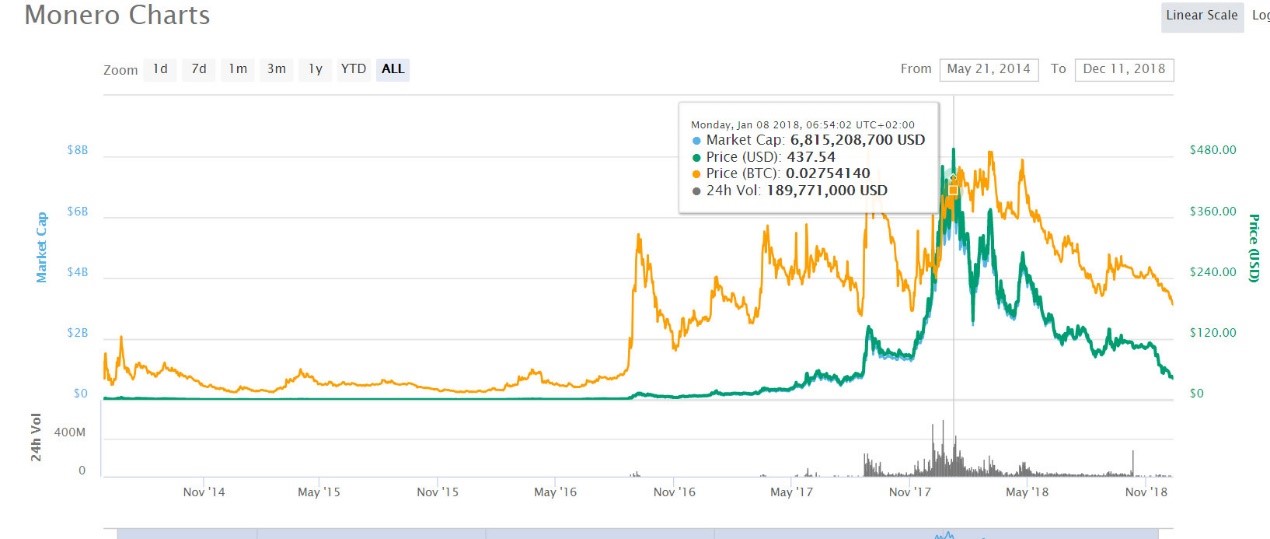
The Monero Technology
Monero’s technology is based upon a Proof-of-Work (PoW) algorithm that is adaptable by a wide range of processors to ensure more democratic mining opportunity. The coin’s block time is two minutes. Its block reward system enables it to be a disinflationary currency and continue to provide an incentive for the mining of Monero as well as maintaining the security of its blockchain.
Monero implements a few unique features to deliver greater anonymity and privacy to its users:
Ring Technology
Developed in conjunction by academics at both MIT and the Weizmann Institute in 2001, ring signatures are digital signatures that can be made by any member of a group that has the keys, which makes it much more difficult to verify the exact individual who made the signature. Ring signatures do this by mixing account keys with public keys to make it much harder to trace any one signature to any particular user.
Monero also employs a technique known as “ring confidential transactions,” or RingCT, which means that in addition to being able to hide the address of a user, it is also able to hide the amount of each individual transaction. Ring CT was implemented in Monero in January of 2017.
Anonymity Technology
Monero is currently working on the development of Kovri. Kovri is a decentralized anonymity technology based on I2P, an anonymous overlay network that allows for secure and anonymous communication over the Internet. The goal of Kovri is to be a lightweight and faster version of I2P. The company released an alpha version of the technology in August.
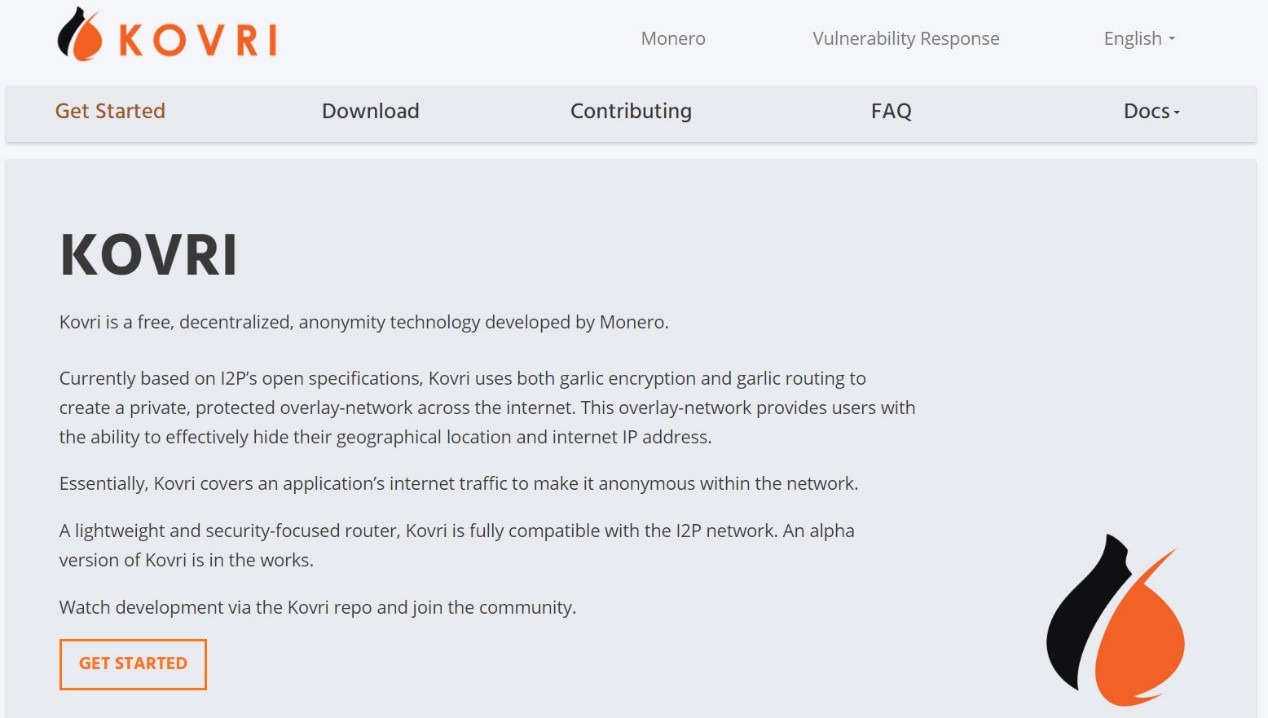
Stealth addresses
Stealth addresses are random addresses generated for each transaction. This enables better anonymity as only the sender and receiver know the address of where the payment was sent.
How to Purchase XMR
Binance is the main option for purchasing XMR, as well as the exchange where it has the highest volume of trading at $1.8 million. It is available for purchasing with BTC and ETH.
XMR is also available on the following exchanges:
- Bithumb (Trade XMR with KRW on Bithumb)
- Exrates (Trade XMR with BTC on Exrates)
- HitBTC (Trade XMR with BTC on HitBTC)
- IDCM (Trade XMR with USDT on ICDM)
How to Store XMR
Several Monero wallets exist, all of which are available for download from the Monero website.
Monero also has a dedicated hard wallet that is currently being developed.
As of the end of November, Ledger Nano S announced its integration of Monero into its wallet.
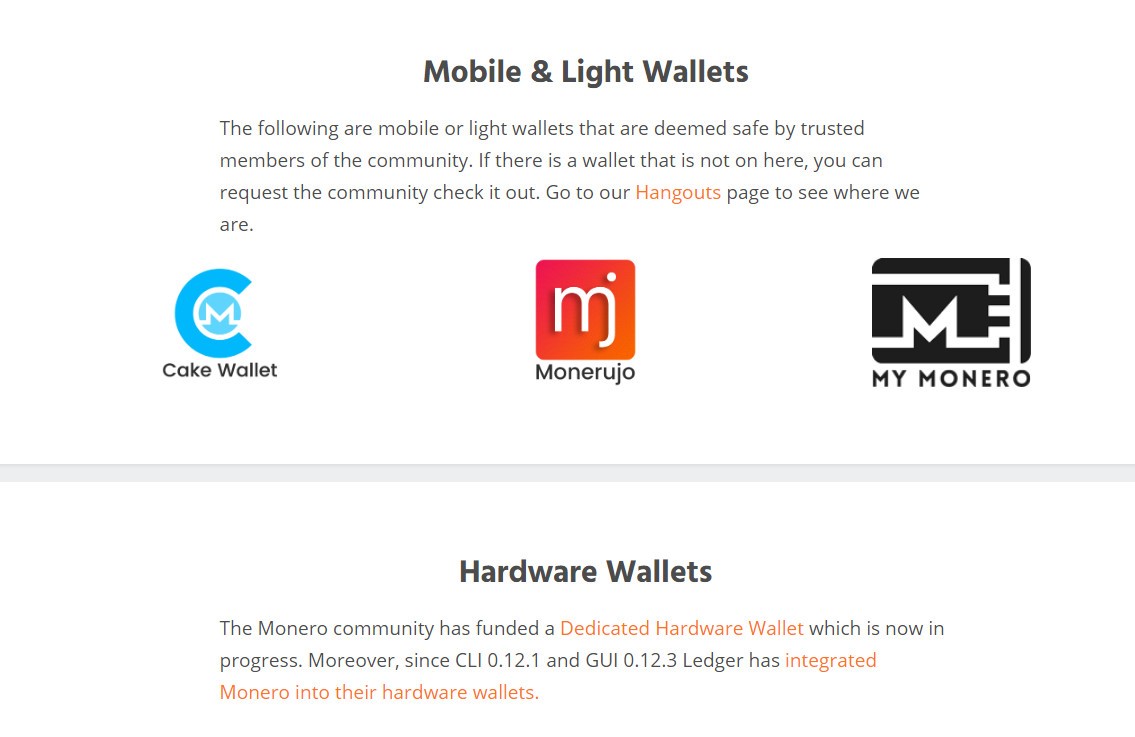
How to Mine XMR
Since Monero relies on a PoW algorithm, it is resistant to ASIC mining and is more available to anyone wishing to mine it. You will need to first download a mining software and then join a mining pool. A list of both types of software and mining pools are available on the Monero website.
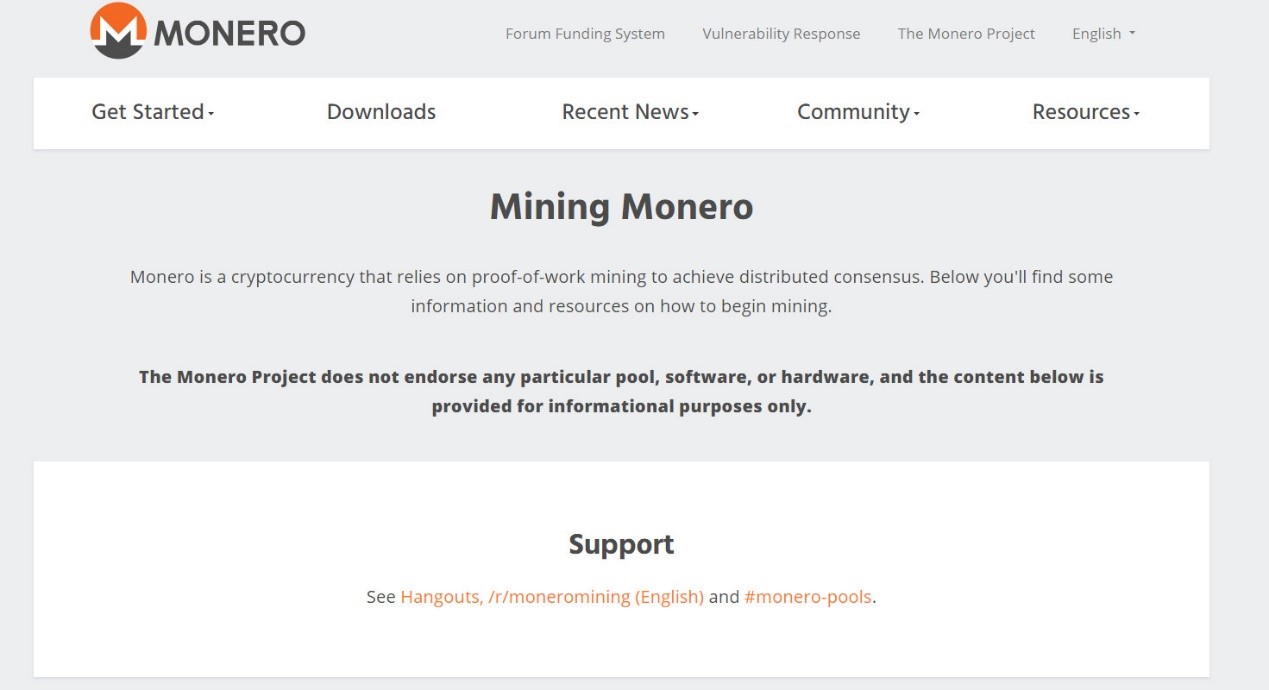
Monero Roadmap and Future Plans
Monero’s roadmap is available on the company website, but it is not updated on a regular basis. Its current goals according to the official roadmap include the replacement of RingCT with BulletProofs, which are designed to decrease transaction size and significantly decrease Monero’s transaction fees. The first stage of BulletProofs was implemented at the end of 2017. It also intents to revamp its Forum Funding, which is its community-based fundraising system.
Future goals include developing second-layer solutions for speed and scalability, and continued publication of research papers.
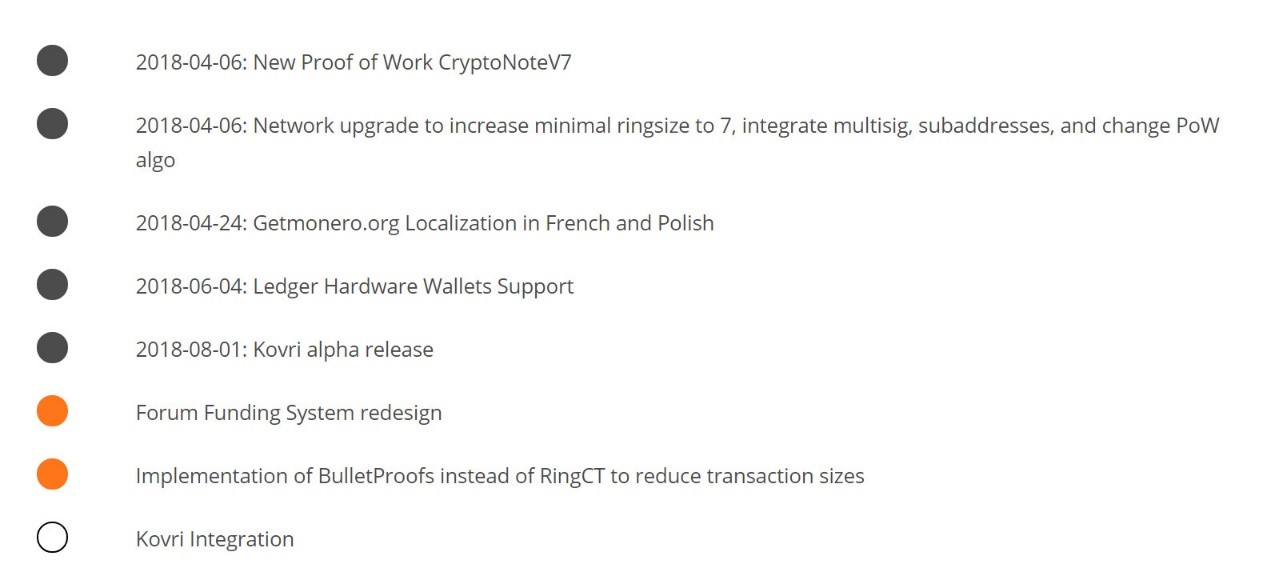
Note: Black refers to completed tasks; orange refers to ongoing tasks; white refers to upcoming ones.

